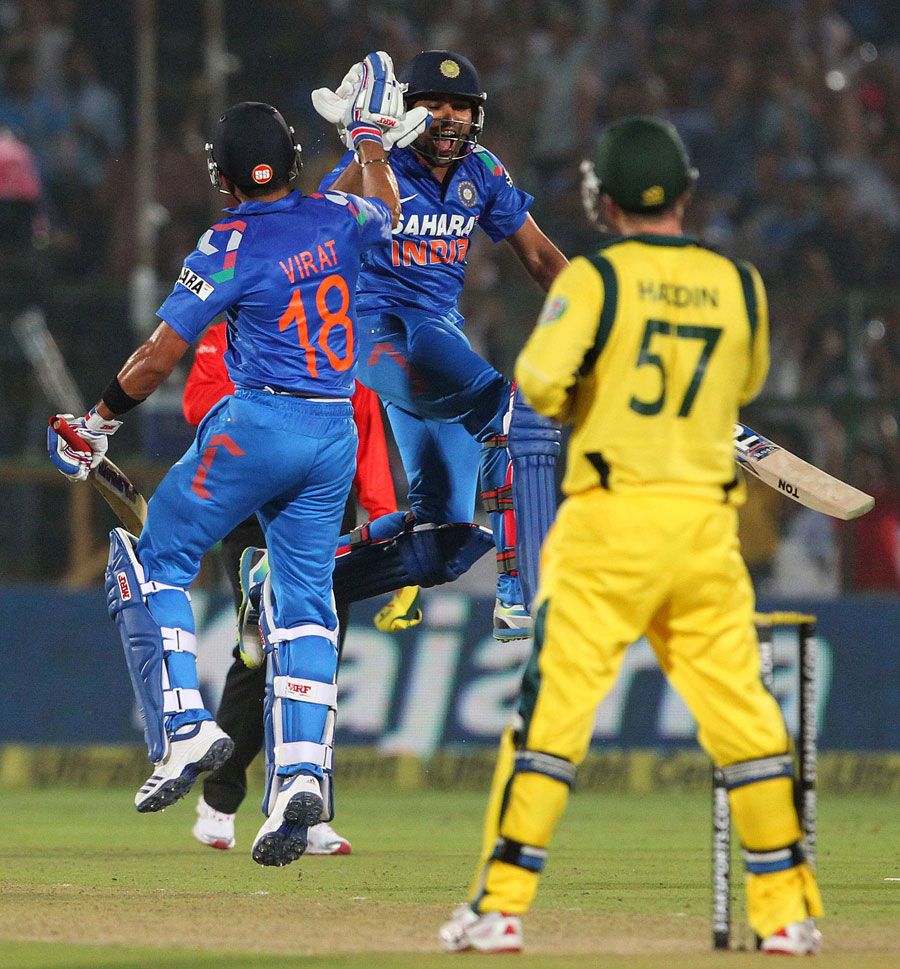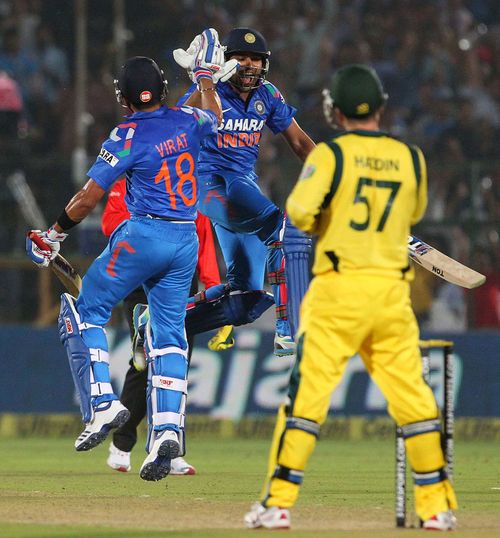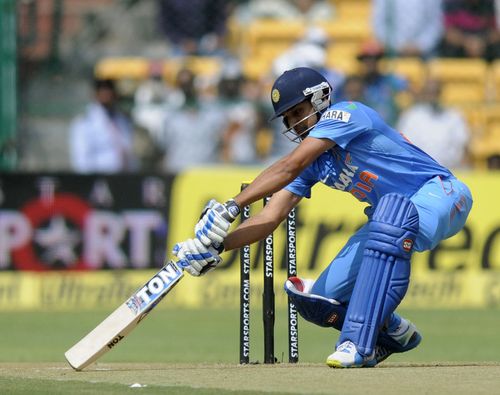
ODIs dying a slow death with increasingly batting-friendly rules

Chasing 300 is not a big deal any more
India vs Australia, what a series we witnessed. Every match saw a score of over 300 and 3 out of 5 times we saw the chasing side making it a child’s play.
The bowlers were assassinated day after day one by one. Mitchell Johnson to Ishant Sharma, they all looked like amateur domestic bowlers in front of the batsmen.
Remember the 2003 World Cup final? The teams were the same, stakes were highest, and Australia posted a 359-2 in their 50 overs. They, along with the viewers, knew that the cup was theirs to take.
That Indian team was considered as one of the greatest. We had the likes of Sachin Tendulkar, Virendra Sehwag, Rahul Dravid, Saurav Ganguly and Yuvraj Singh to rally behind.
The Master Blaster was in the most sublime form of his career, knocking 669 runs before that night in 9 matches. The Bengal tiger was riding his own momentum just behind Tendulkar in the top scorer’s list. But still, somewhere down our hearts, we all knew that India needed a miracle to win.
359 didn’t use to be chased down just like that. It was unattainable even with the legendary batting line-up we had then.
Let’s go back a bit more. Natwest Series final, 2002, India vs England – Englishmen posted an “unattainable target” of 326. The fans’ expectations were dull after India were down to 146-5, and then two youngsters took the greatest stride of their careers and chased down the score and wrote what remains arguably the greatest chasing story in the Indian cricket history.

This past series was different though. 5 matches were played out of 7, and every match saw a score over 300.
Chasing 300+ score used to be a daunting task, a rarity while I was growing up. Nowadays it’s always within the reach.
This change in the game could be credited to a lot of reasons. The continuous rise of T20 cricket made the ODIs look boring and monotonous.
The extensive changes in rules that ICC made over the years didn’t help either.
The one day matches looked a little out of place, a right thing in a wrong generation, perhaps.
ICC sensed this and started making amendments in the rules, chopping the wings and feathers of bowlers day after day in a very methodical way. This might be because the rule-makers, much like the laymen, believed that cricket is all about blasting 6s and 4s, or as it seems to a lot of people around.
Rohit Sharma hit a fantastic 209 in the last ODI against the Aussies. A historic innings nonetheless, but even he wouldn’t have expected to hit 16 sixes. It just looked unrealistic. 107 sixes were hit during the 5 matches by both sides. God save the bowlers!

Getting to hit so many sixes and fours used to be a part of simulation games. I remember playing EA cricket 2002, and there was a cheat code called “big bat”. You could hit any bowler at any difficulty level for as long as you wanted. But here we are talking about real matches, real bowlers bowling to “real” batsmen. Alas! It doesn’t really seem so. Today, no batsman looks ordinary, and bowlers seem nothing more than ordinary.
So when did this happen?
It wasn’t sudden. First came the twenty 20s. Then we wished for more and one Lalit Modi came with the idea of Indian Premier League. That was the turning point. Players were sold and bought at prices way higher than what their boards could ever pay them. The market was open.
The spectators started desiring fast-paced soccer-style cricket matches. The boards were earning millions of bucks. The players were getting money like they never did before. The beast had tasted blood.
Test matches were different ball games altogether. ICC maintained their sanity with them. (Thank god!)
ODIs were always the shorter version, made for entertainment. Now with T20 in the picture, showing much prominence, the 50-over format suddenly finds itself in the middle of nowhere.
I am afraid ICC’s attempt to save the ODIs would lead to a slow death for the flagship format of the game.
These days, watching cricket is like watching a baseball game. It’s all about hitting the home run aka sixes.
The state of the game can be understood by the frustration Indian skipper showed recently after the 6th ODI by sarcastically talking about replacing bowlers with machines, because it is all about hard-hitting these days. This is also significant because Mahendra Singh Dhoni himself is arguably the hardest hitter of the ball in the world today.
People are heard saying that 300s have become the new 250s these days. Records are getting shattered, but with the new rules in place, do the records even matter?
In the coming years, we would see many more 200+ individual scores in ODIs. It will just not be special any more. The big scores would soon make the audience yawn. The interest would wear out soon.
Amendments are needed, but the right ones. Bowlers need to get their share of advantages just like their counterparts. It should be a fair game or the ODI format better be nixed for good except the World Cup.
I am no one to comment on the future of the game, but cricket should be played like cricket and not like a sports entertainment circus.
Let’s cherish the beauty of ODIs and not just let it perish under our ever increasing expectations.
Let the game of cricket be above everything else. Amen!